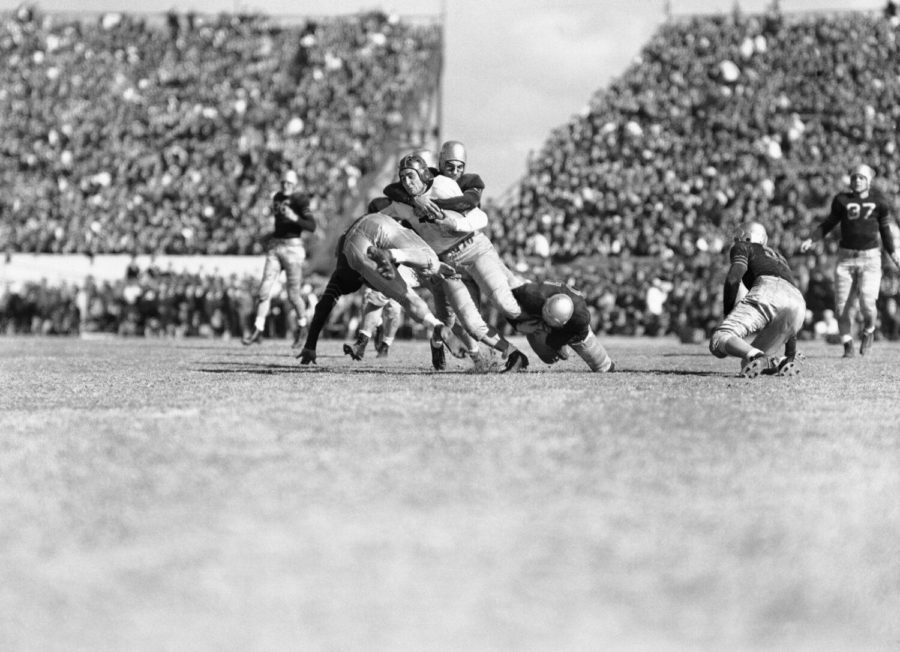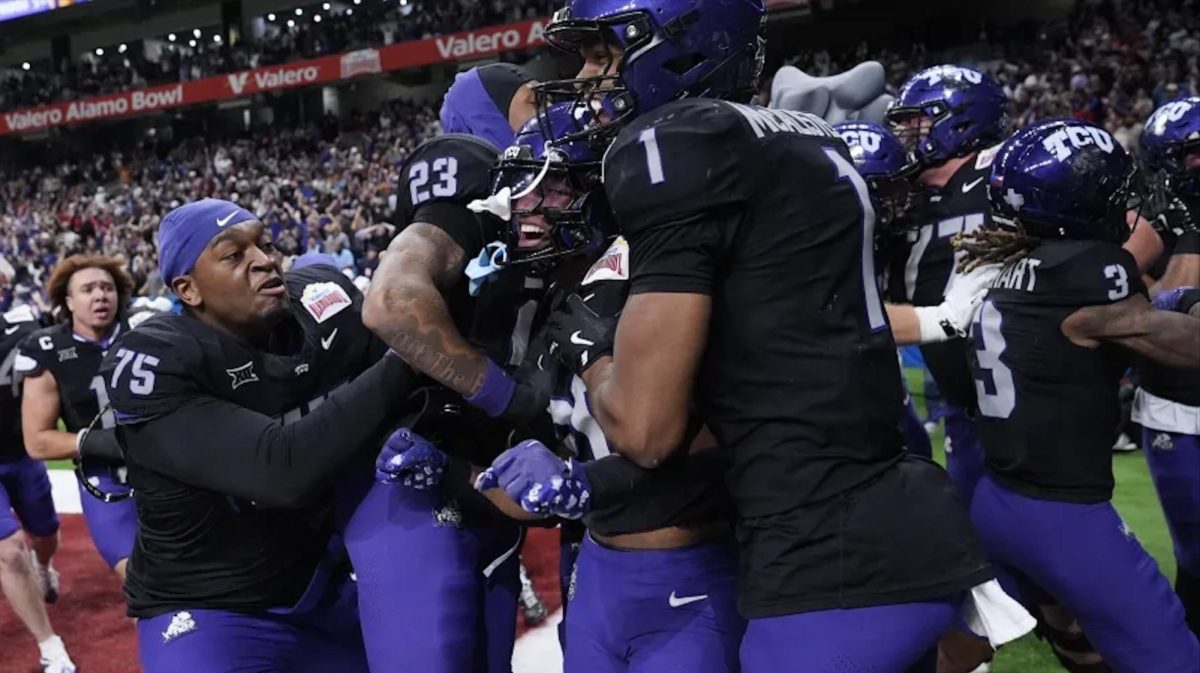The ‘whirlwind’ of TCU football’s conference realignments
Johnny Hall, in white, Texas Christian University halfback, found lots of opposition, but managed a five yard gain against Carnegie Tech in the Sugar Bowl in New Orleans, La., Jan. 2, 1939. (AP Photo)
Published Sep 18, 2021
In the midst of a chaotic summer for the Big 12 Conference, TCU football is — once again — scrambling to find ways to keep up.
Whether Frog fans remember the national titles of the 30s or the Big 12 co-title of 2014, TCU has been viewed as an “underdog” by the bigger programs year after year, even after beating Texas in seven of nine games since joining the Big 12.
Texas and Oklahoma leaving the Big 12 doesn’t surprise college football historians, though, who realize the influence and money factor of larger programs.
Gone are the days when conference affiliation wasn’t a “money-making affair in the leather-helmet era,” said Ezra Hood, a TCU alum and the author of “Riff, Ram, Bah, Zoo! Football Comes to TCU,” a history of TCU football published in 2013.
The rollercoaster of conference realignments in the 2000s, when the Frogs loop-the-looped through the C-USA, MWC, Big East (briefly) and now the Big 12, cemented their identity as an “underdog with a chip-on-its-shoulder,” Hood said.
What’s remained true through it all is that the “underdogs” aren’t strangers to scrapping and clawing for their piece of the pie.
From out the ashes
Conference affiliations of TCU football date back to the conception of the Texas Intercollegiate Athletic Association (TIAA) in 1909, and it wasn’t long too before the university found itself in a tough spot, both in Waco and in the college football landscape.
With all due respect to the 1909 “football squad,” a team coached by the Head of the Violin Department, Frederick Cahoon, it was clear that football simply had not hit it big time yet.
After the Waco campus went ablaze in 1910, TCU students and faculty pleaded to relocate to Dallas, according to Hood. But Fort Worth, offering a 50-acre campus with existing infrastructure — and most importantly a $200,000 bonus — gave Fort Worth the edge over Dallas in 1910.
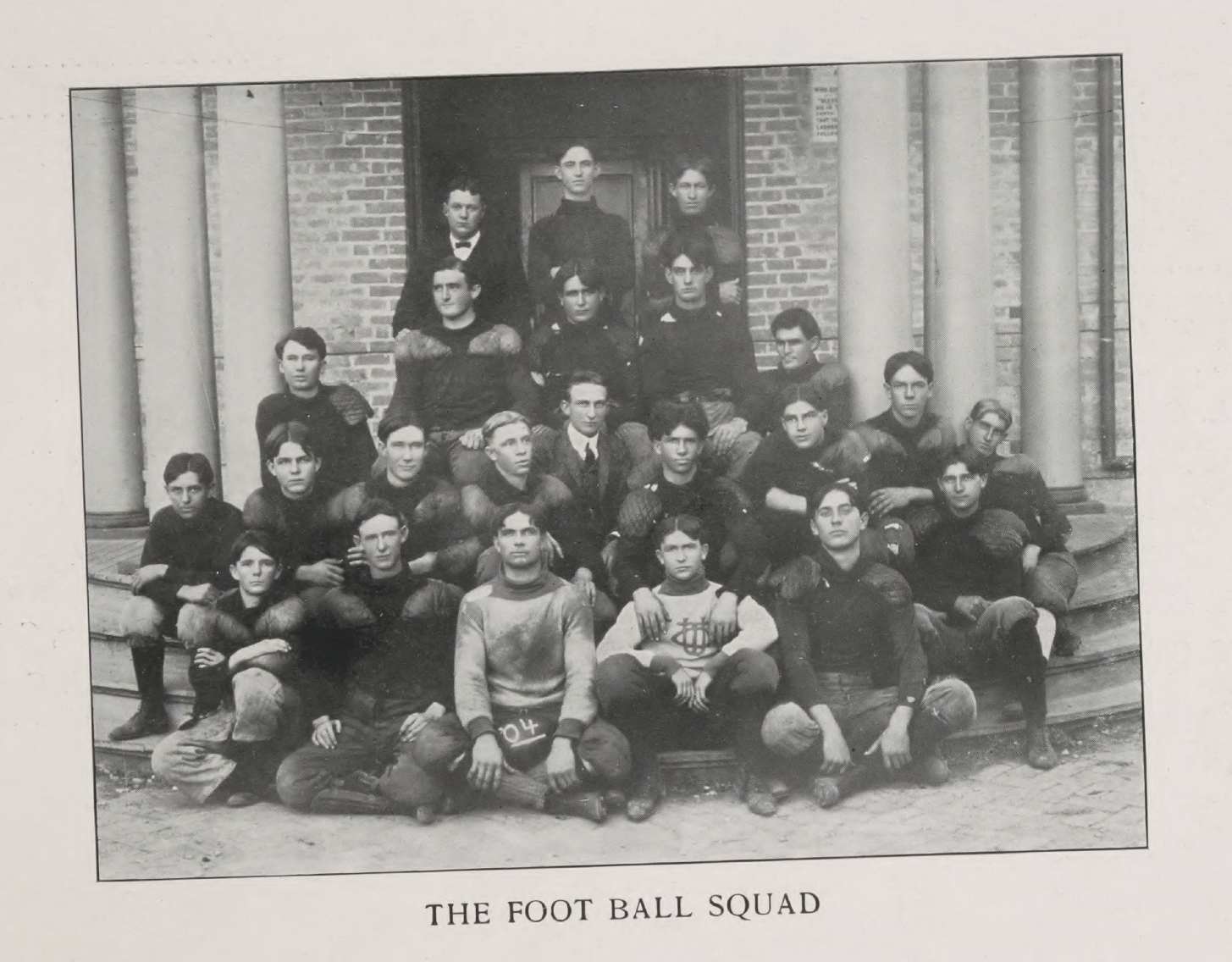
This was about the time the “underdogs” started up the tracks of their conference tour.
In the spring of 1914, TCU saw the disadvantage of building a new school in Fort Worth when it was left out of Texas’ baby, the Southwest Conference (SWC).
Contributing to the affair was the lack of a hometown crowd, unstable coaching and the TCU Athletic Field, which was “just a vacant patch of Johnson grass bounded by a wood grandstand” that “only seated 4,000,” wrote Rick Waters in a 2011 edition of TCU Magazine.
In truth, violating eligibility and being kicked from the TIAA for the 1913 season were all other schools needed to exclude TCU from the conference.
The SWC that would go on to harbor schools like Baylor, Texas, Southwestern and Texas A&M, left TCU to salvage what was left of the TIAA and the small Texas schools nearby.
But TCU clapped back at their Texas counterparts in the 1920 season, earning a record of 9-0 and breaking into the only postseason game outside of the Rose Bowl, the Fort Worth Classic.
“No Texas team had been to a bowl game before,” wrote Waters.
Big time Frogs
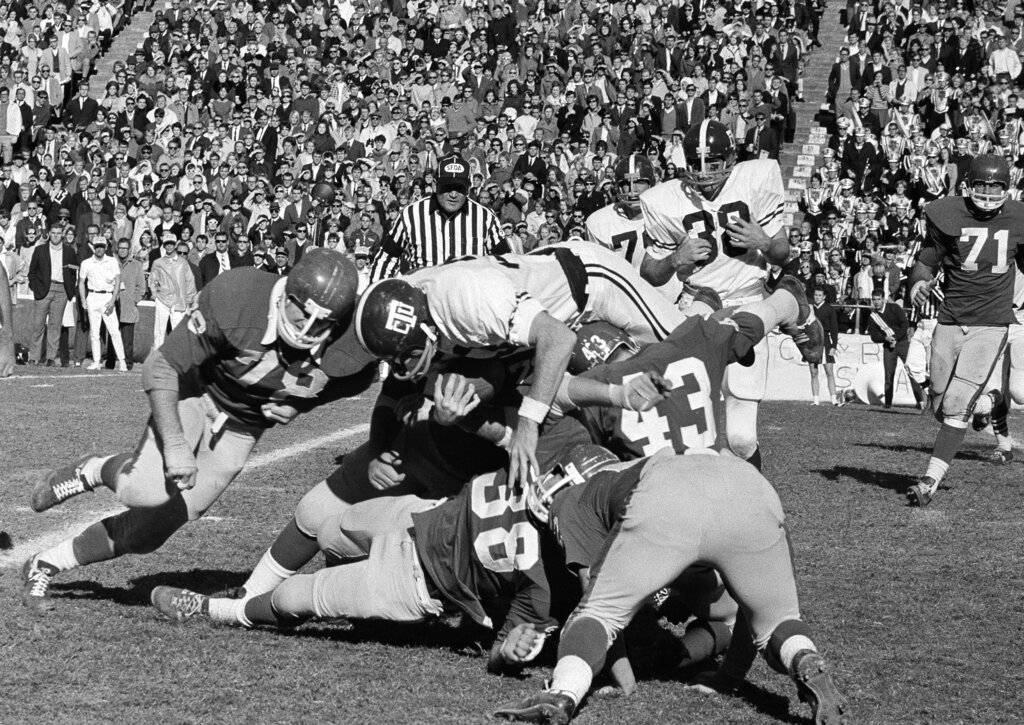
The addition of an enthusiastic Madison “Matty” Bell helped TCU convince the SWC to admit the Frogs in 1922, under a condition — TCU had to build a larger stadium.
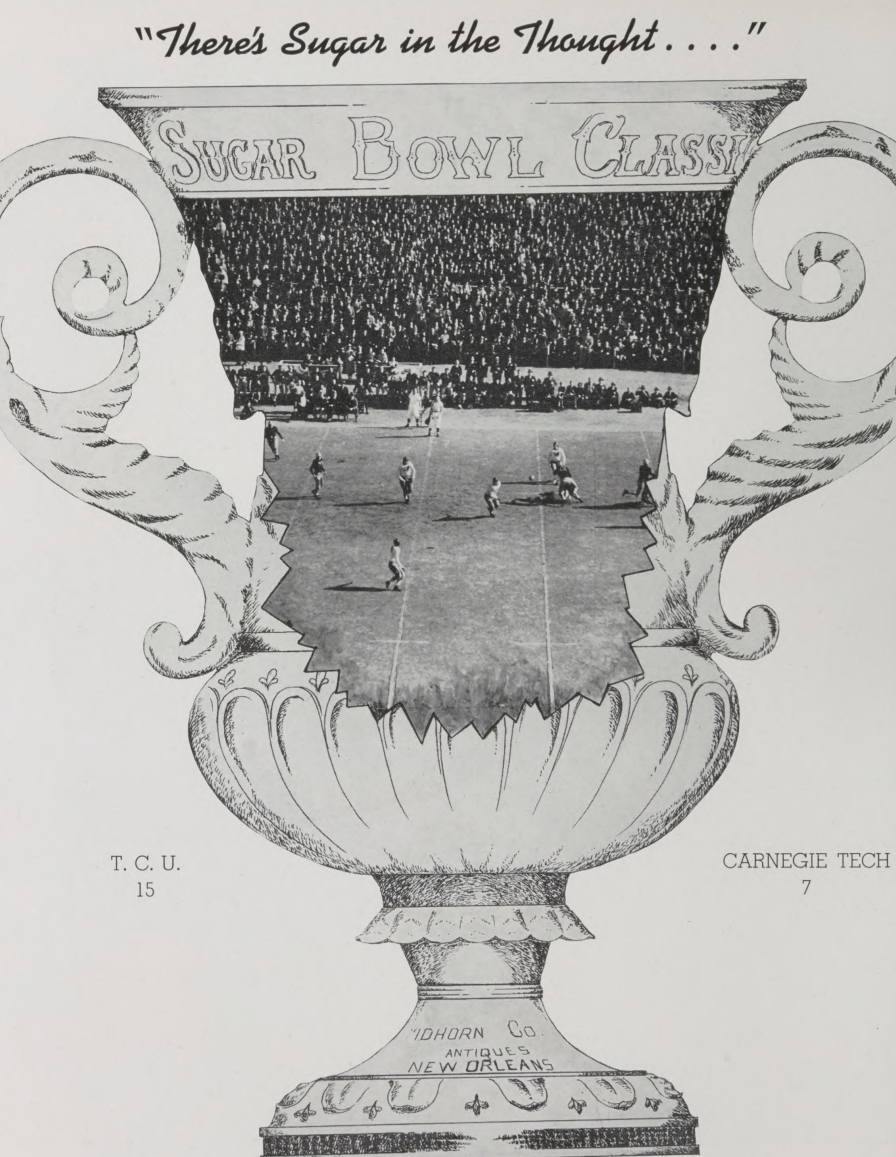
By 1929, TCU was hosting game days in 20,000-seat Clark Field (also called “Frogland Stadium”), and by 1930, after the Frogs had won their first SWC championship, the city of Fort Worth could finally get behind building a “big-time stadium.”
The program hit its stride with the SWC in the 1930s, taking home four conference titles and two national titles (’35 and ’38) over the course of the decade — credit to TCU legends: coach Dutch Meyers, “Slingin’ “Sammy” Baugh and Davey O’Brien.
The longest period of conference stability for the Horned Frogs lasted up until the mid-90s with the SWC.
But there was trouble in paradise.
The TCU football program had a major drop-off following their peak in the thirties, suffering 19 losing seasons from 1960 to 1982.
It became a major focus for the school board to jumpstart its lethargic football program to the likeness of the Baugh, O’Brien days — in hopes it would help boost revenue for a university going through its own problems.
Mo’ money mo’ problems
Money-grabs and TV deals forced FBS teams into two categories after the inception of the clout term “Power Five”: worthy or unworthy.
TCU, deemed unworthy of the Big 12, headed to the WAC in 1996 after discussions about a new conference did not involve them, a scheme dusted off from nearly a century ago.
Read more: Chancellor Boschini talks TCU, Big 12 expansion
“A&M and Texas were easy, and Texas Tech had the third-best attendance,” said former University of Texas president and chancellor Bill Cunningham. “Then we came down to the fourth school, and that was Baylor versus TCU. When you really looked at the hard data, Baylor was the better choice. They had better attendance and better records.”
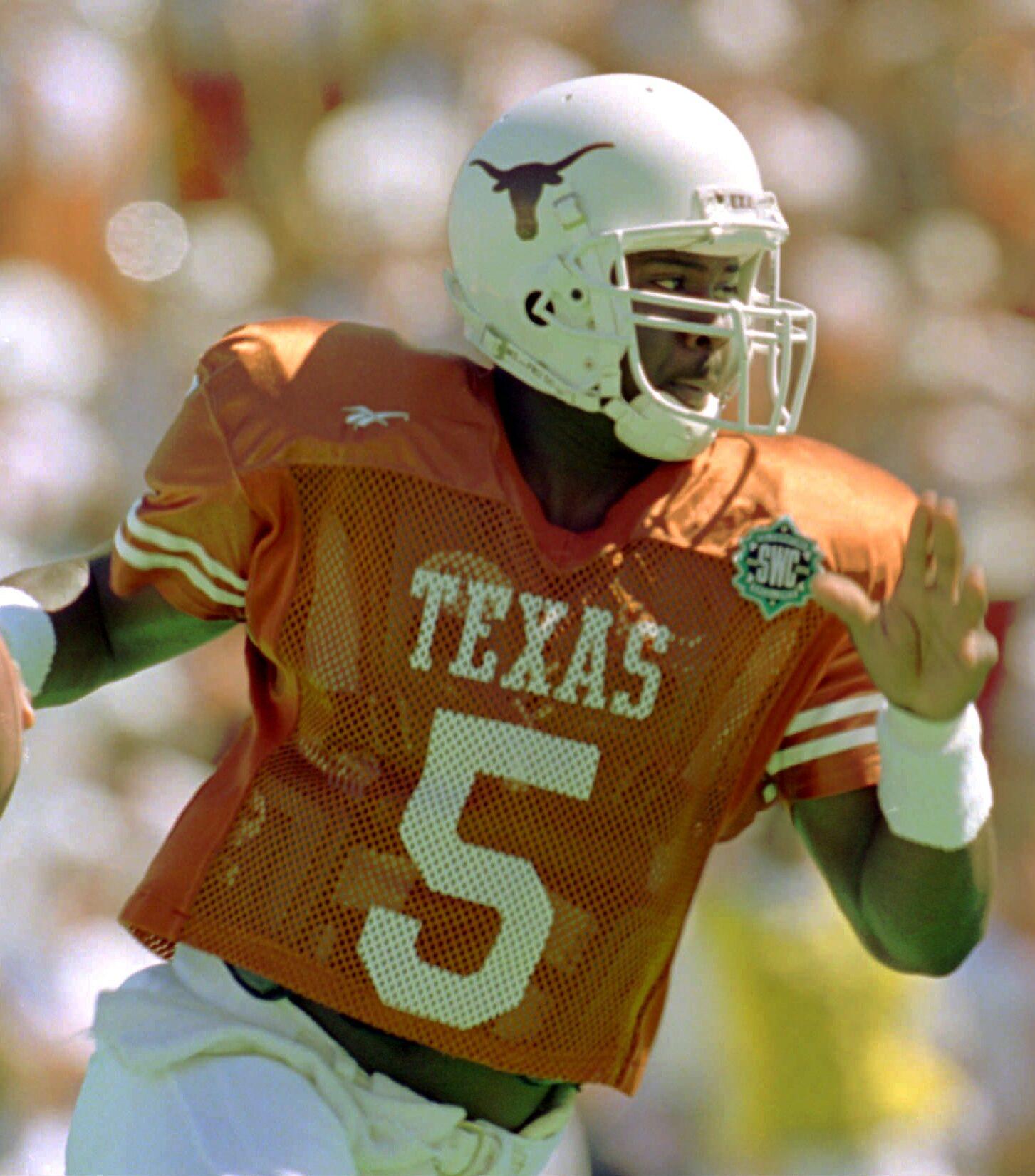
The scheme involved none other than Texas, again.
Here is what really occurred:
Since the 1950s, the NCAA had total control over assigning television broadcasts to games, claiming they would be able to better balance air times for universities, according to The Washington Post.
Partially as a result of TV deals being decided by the NCAA, a group of American colleges formed a lobbying association called the College Football Association to combat the patriarchy of the NCAA.
In 1984, a Supreme Court case involving the University of Oklahoma and the University of Georgia changed the tide of college football by allowing universities to negotiate their own TV deals.
“People were just fed up with the NCAA’s parochialism, power grab, etc., but also they wanted more money, they wanted to maximize and they wanted their fans to be able to see them on TV,” said James Ponsoldt, a law professor at the University of Georgia.
Ironically, the CFA signed multiple TV deals but was terminated in 1997 as conferences and individual teams with bigger names (like Notre Dame) decided to break off and sign their own national TV deals.
So when SWC teams like Texas got wind of these new freedoms, they jumped on the opportunity to build a TV alliance faster than green grass through a goose.
Schools like Houston, TCU and Rice didn’t make the cut — along with the decision to leave SMU behind because of its recruitment ordeal that was met with the NCAA’s “death penalty.”
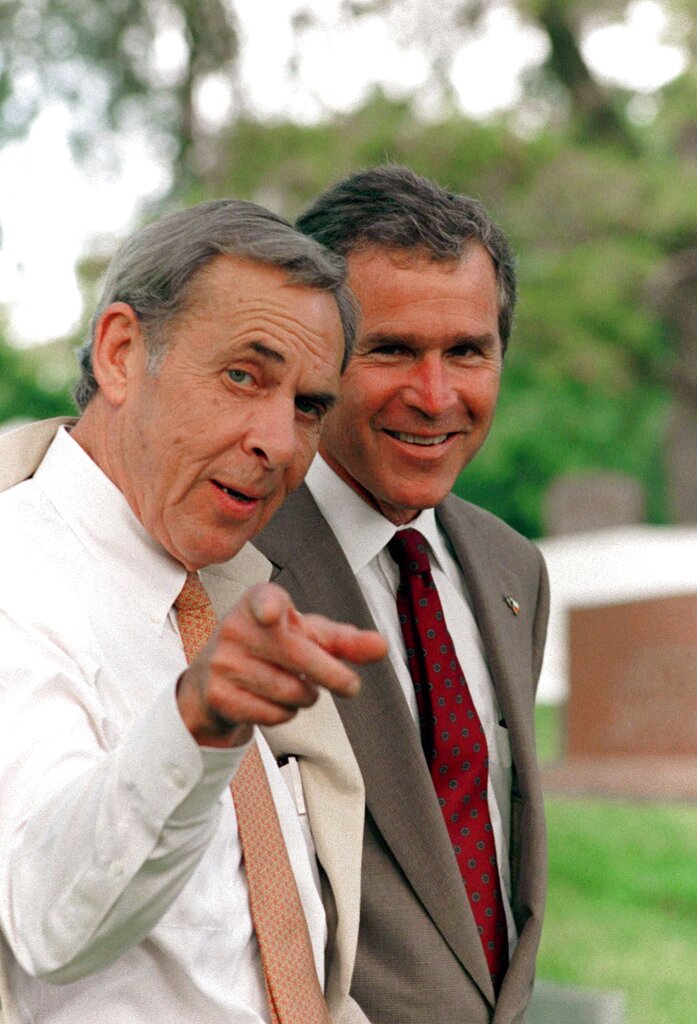
But everyone was trying to get in on the action. In light of the current Big 12 additions, even BYU was courting the Big 12 during the 1994 merger and there was consideration for a “Big 14” Conference, according to a publication from 1994.
Politics may also have played a role in the Big 12 invitations.
Lt. Gov. Bob Bullock, a Texas Tech and Baylor alumnus, Texas Gov. Ann Richards, a Baylor and UT alumnus and state senator David Sibley, another Baylor alumni, were all accused of involvement.
According to the book “Bob Bullock: God Bless Texas,” by Dave McNeely and Jim Henderson, Bullock summoned Texas and Texas A&M’s presidents to his office in early 1994 as the merger neared.
“You’re taking Tech and Baylor, or you’re not taking anything,” Bullock told them. “I’ll cut your money off, and you can join privately if you want, but you won’t get another nickel of state money.”
While the claims weren’t substantiated by investigators, many sports professions stand by the influence of Texas politics in the Big 12 merger.
Just like that, the SWC, one of the most prominent conferences in the nation, collapsed in 1996.
The whirlwind
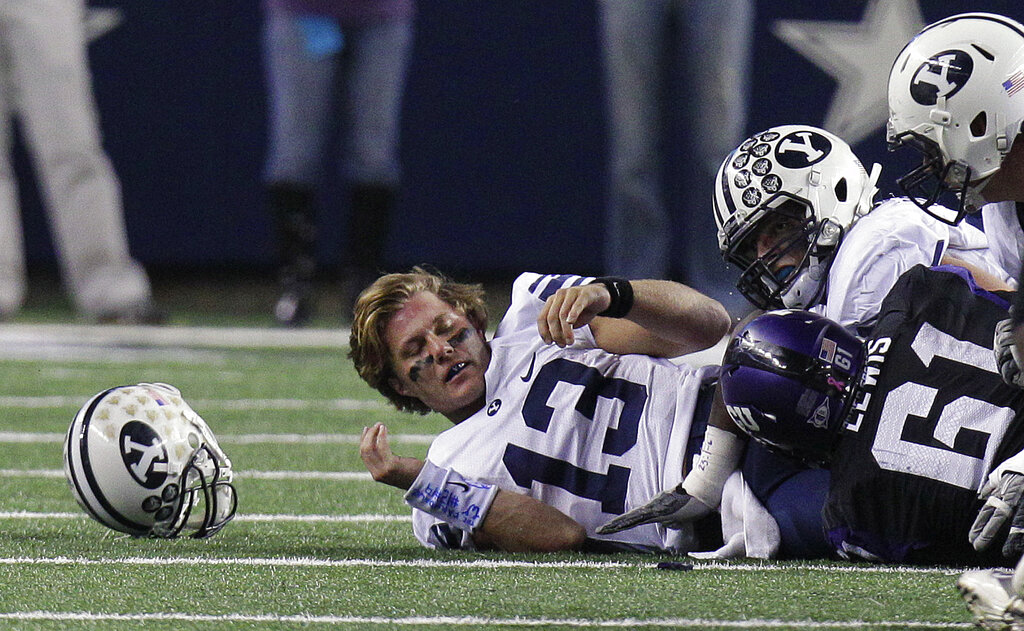
The dissolution of the SWC, formation of the Big 12 and expansion of the Western Athletic Conference (WAC) gave way to some of the biggest cluster-you-know-whats in conference hopping history.
But TCU stood on the outskirts of the Power Five, along with an assortment of FBS teams across the nation who were just hoping to survive.
The WAC, then composed of 16 teams with four different time zones, was the last-ditch effort TCU didn’t want but desperately needed after 28 losing seasons, including three bowl losses and one tie the previous 38 years.
“The SWC was gone, and little-known teams from out west were traveling to Fort Worth without their fans,” wrote Waters. “With a sparsely filled stadium, lesser-known opponents and a downtrodden home team, Frog fans stayed away, disappointed one too many times.”
After about five seasons of rebuilding in the WAC, including winning two of three consecutive bowl games, the Frogs kicked off its first season in Conference USA (C-USA) in autumn of 2001 under new head coach Gary Patterson.
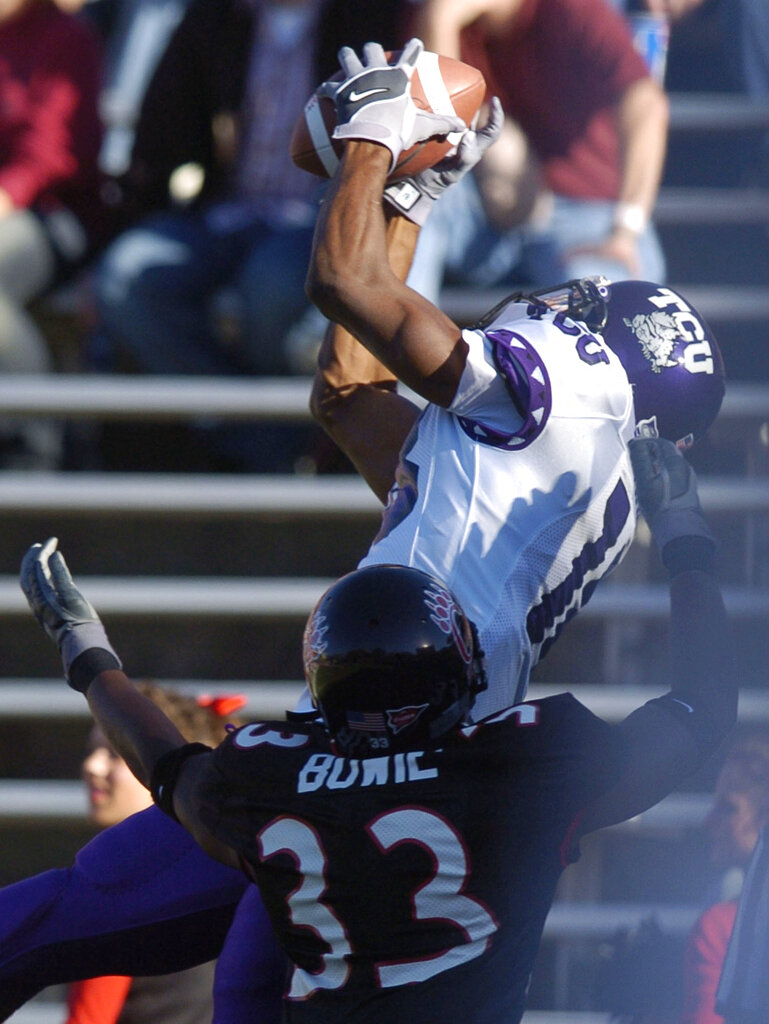
TCU was gaining ground and proving the nation wrong as underdogs once again under a new conference. The Frogs remained nationally ranked for the entire season of 2003, finishing the regular season with only one loss.
TCU upgraded to the Mountain West Conference (MWC), part of a nationwide conference realignment that occurred from 2005 to 2006 on July 1, 2005.
This move proved to favor the Frogs’ stock, as they won four out of seven MWC titles and earned the attention of the nation, making ESPN College GameDay vs BYU in 2009 and edging out Wisconsin in 2011’s Rose Bowl — completing a perfect 13-0 season.
“The Mountain West had no answer for TCU in 2010 and 2011,” said Hood.
Stalking TCU all the while was a giant that resided to the East.
According to ESPN sources, Pitt basketball coach Jamie Dixon — yes, current head coach of TCU basketball — “first proposed the idea to TCU athletic director Chris Del Conte” in September, then brought the idea to league officials who “kicked it around.”
On Nov. 2, the Big East announced its expansion, and on Nov. 29, 2010, TCU agreed to join the Big East (home to schools opposite TCU’s geographic location, North and East) for the 2012 season.
That was the case until a better offer came to the table.
Around the 2012 season, after the Big 12 had a scare, losing Colorado to the Pac-10 and Nebraska to the Big Ten, TCU finally navigated the ‘odyssey’ and got the late bid into the Big 12 alongside West Virginia.
Playing conference catch-up was a “whirlwind,” remembered Star-Telegram writer-reporter Bud Kennedy.
“TCU was in one league, then another league, and you never knew whether to book hotel reservations for next season in Fresno or Fort Collins or Cincinnati,” Kennedy said.
According to Kennedy, TCU was subject to secondary TV game times that meant Thursday night games or late West Coast games.
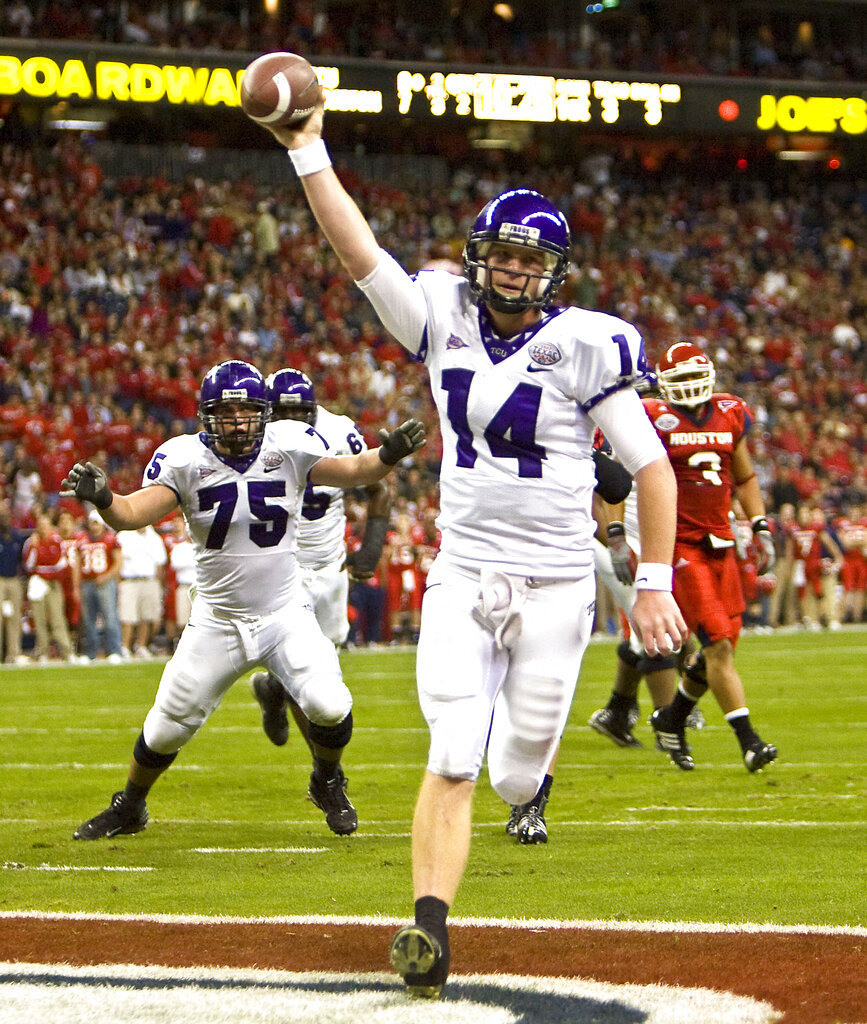
“The good part was the fantastic trips to Air Force and really good vacation destinations instead of, say, Stillwater,” Kennedy said.
While before joining the Big 12, TCU didn’t bring in nearly as much money, fans were happy and knew a big chance would come someday, according to Kennedy.
“Those games against Utah and Air Force were almost as much fun as beating Texas. Notice I said almost,” Kennedy said.
National exposure may have taken a hit during TCU’s bad years in the Big 12, compared to the Cinderella stories from the MWC, argued Dr. Finch, Director of the Sports Management Institute in the Spears School of Business at Oklahoma State University.
So why would a college football team that roused so much excitement in the Mountain West Conference would move to a conference where the odds were stacked?
According to Finch, the revenue “windfall” made the difference.
$35 million+ in TV revenue allowed for facility improvements, new coaches, upscaled recruiting and much more.
Hood said the consistent success in cash flow has not translated into a consistent, successful program in the Big 12 — “aside from beating Texas often.”
“I think it was Dan Jenkins who said when TCU joined the Big 12, ‘Goodbye 11-1, hello 8-4.’ If anything, he overstated TCU’s case,” Hood said. “7-5 has been more the normal. Our fanbase still harbors a lot of 2010-11 MWC TCU in it, but I think that involves more than a little self-delusion.”
Coach Patterson summarized his response in two words. “We belong,” he said back in 2012.
Over his tenure in the Big 12, the Frogs have a current record of 71 wins and 44 losses, for a win-loss percentage of 0.617 — ranking in the middle of the pack since arriving at the Big 12 at 6th (one spot both in front of Texas Tech and behind Texas).
Future for the Frogs
Much has happened in the past year that will change the college football landscape once again, and it’s a lot of the same old story from TCU: bigger schools taking the fastest route to ‘TV-town’ while smaller schools saunter through a detour.
Historically, TCU has played in conferences against three of its four new opponents: BYU (in the MWS), Houston (in the SWC) and Cincinnati (in the C-USA). UCF is the only new opponent TCU has never played.
Only time will tell whether the newest Big 12 acquisitions will pay off, or if TCU will seek another realignment.

